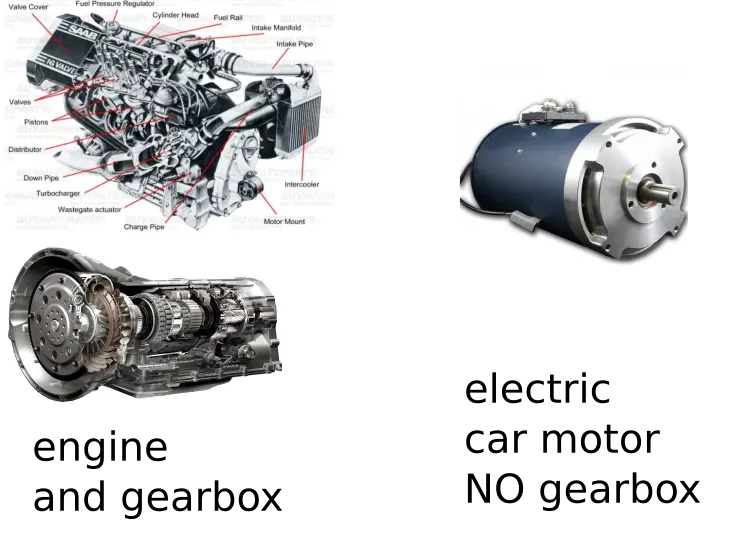Let’s compare fossil fuel cars (petrol – diesel) and electric cars to understand their technical differences.
First, consider the components of an internal combustion engine (ICE) car. An engine alone consists of around 200 parts, while the gearbox (transmission) contains approximately 800 parts. Altogether, this means an ICE car has around 1000 parts which all have the potential to malfunction.
On the other hand, electric cars have no gearbox and operate with only around 20 components in an electric motor. Electric motors are incredibly reliable and rarely need replacement over the car’s lifespan.
In terms of efficiency, traditional petrol engines are only around 25% efficient in turning fuel into energy, resulting in 75% energy waste. Electric cars, however, are about 85% efficient, with only 15% energy lost.
In addition, electric cars have fewer parts in their power steering and braking systems, with electric motors replacing components that rely on the engine in ICE cars.
One of the main differences in fuel is the availability of electricity compared to petrol or diesel. While electric cars require recharging, most trips are local or for commuting, making a battery capable of 170km (100 miles) sufficient for many journeys without recharging.
The cost of batteries for electric cars is around 800 USD, with an average lifespan of about 10 years. Therefore, the cost of the battery works out to around 80 USD per year, making electric cars a cost-effective option in comparison to traditional petrol and diesel vehicles.
Overall, with fewer parts, higher efficiency, and lower long-term costs, electric cars present a compelling alternative to fossil fuel vehicles.

